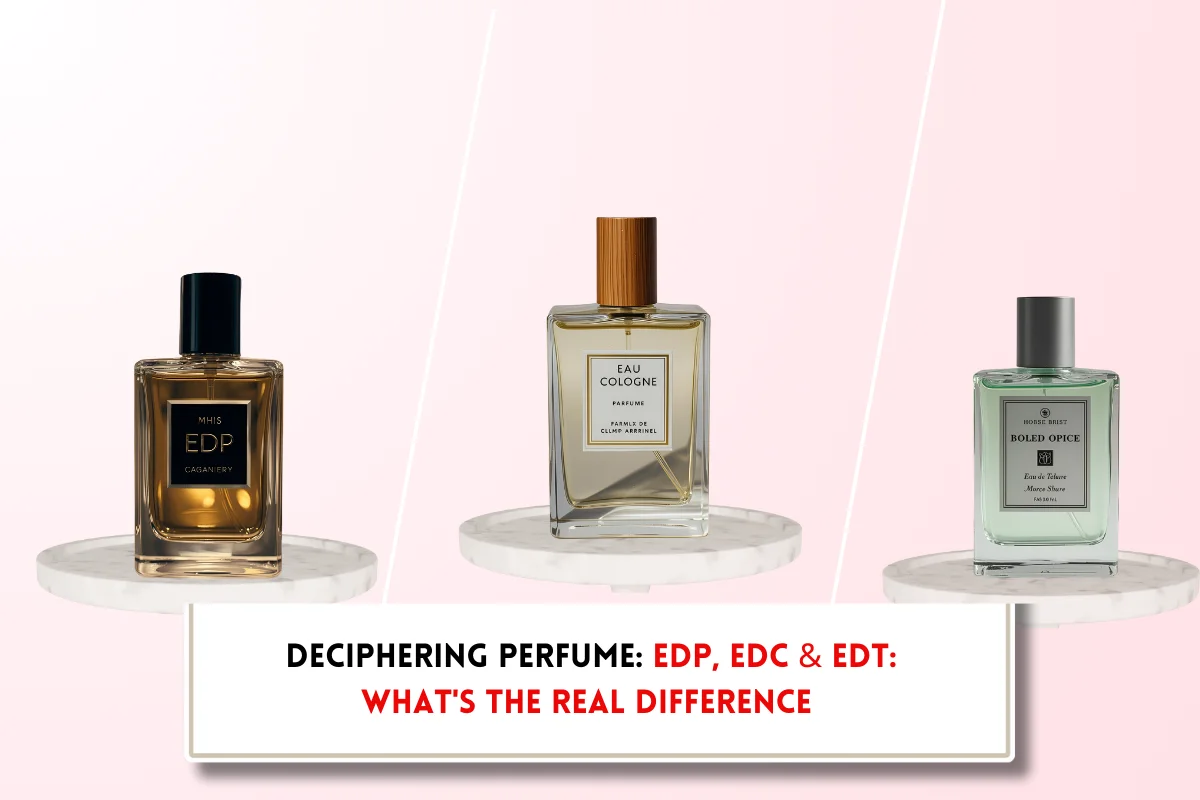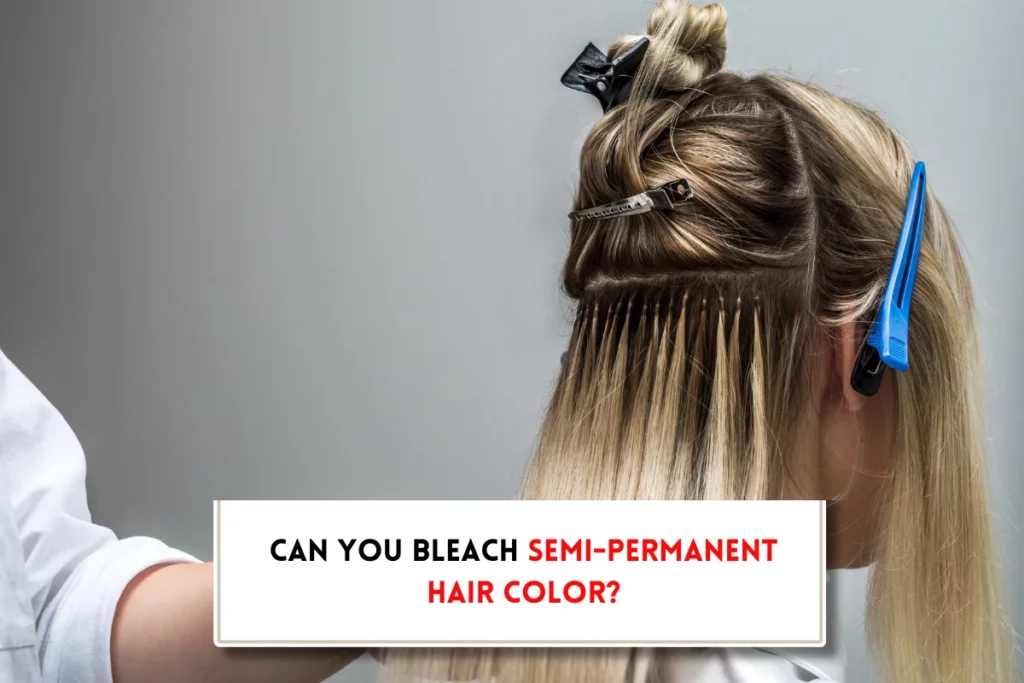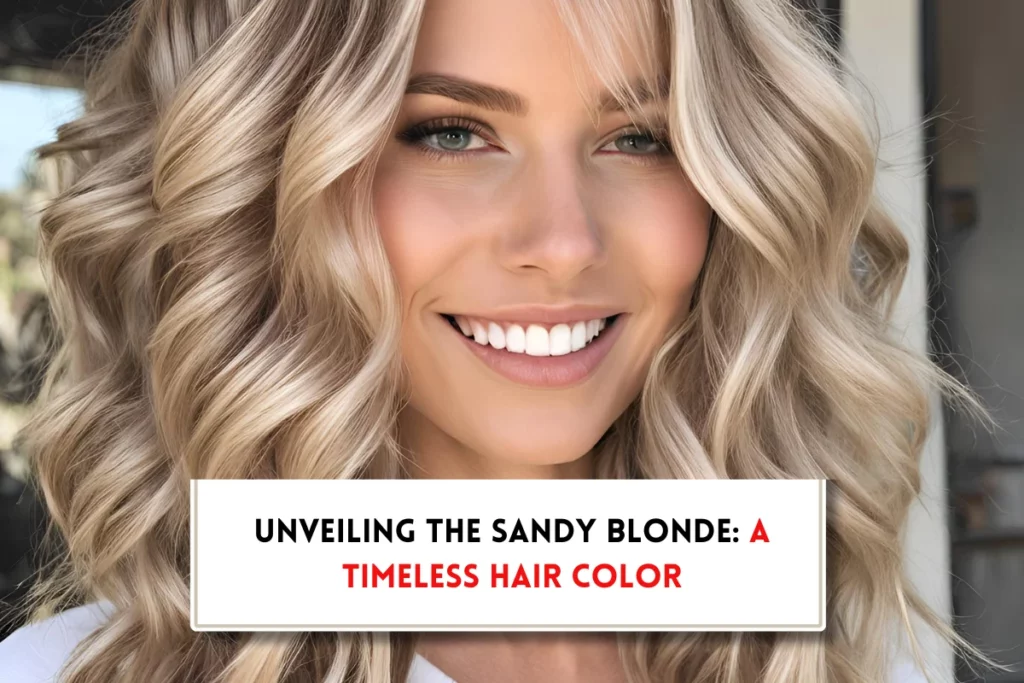How to fill hair before coloring?: A professional guide
At BeautyCaters, our expert team independently curates every recommended product. Purchases through our links may earn us a commission. Explore our transparent selection process.
Do you know what is the secret to a vibrant, long-lasting, and more even hair color? It is hair filling. Hair filling is like giving your hair a nutritional boost before dyeing. It replenishes hair’s natural pigments, and relieves you of the worries of uneven pigmentation or faded hues. ensuring a more even and vibrant color outcome. But hair filling needs proper technique to ensure your hair color looks its best. And what are those techniques? This comprehensive guide, will tell you how to fill hair before coloring.
So, whether you’re a seasoned home colorist or a salon regular, join us as we explore the art of hair filling and unlock the potential for stunning color results.
- What is a hair filling?
- How hair filling works?
- Why you must fill hair before coloring?
- How to fill hair before coloring?
- Tips for achieving even coverage with hair filler
- When you should opt color filling?
- How to choose hair fillers for coloring?
- FAQs: Hair filling before color
- Final Word: How to fill hair before coloring?
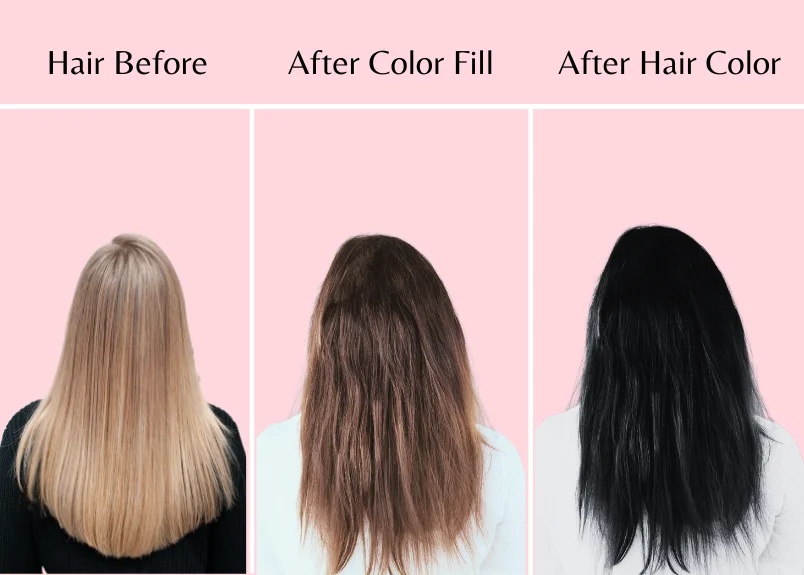
What is a hair filling?
Hair filling is a crucial preparatory step in the coloring process, particularly for those with pre-lightened hair. This technique involves replenishing missing pigments and equalizing porosity, ensuring a more vibrant, even, and long-lasting color.
Hair fillers come in two types:
- Pre-color fillers: These are applied and processed before the target color, typically using oxidative or non-oxidative formulas. Oxidative fillers are often used for more porous or damaged hair, while non-oxidative fillers are suitable for hair with moderate porosity.
- Liquid tints: These are applied directly to the hair, followed by the final color formula. Liquid tints are a versatile option, allowing for precise color correction and customization.
How hair filling works?
Think of color filling as applying a primer before painting. As a primer help the paint adhere better and prevents unevenness or discoloration, similarly, color filling prepares your hair for the vibrant, even darker shade that look natural.
The color filling process typically involves two steps:
- Pigment restoration: A demi-permanent color is applied to reintroduce the lost pigments. This step adds back the missing warm tones and prepares the hair for the subsequent color application.
- Target color application: The desired darker color is then applied directly over the filled hair. This ensures a more vibrant and even result.
Also Read: Decoding sandy hair color.
Why you must fill hair before coloring?
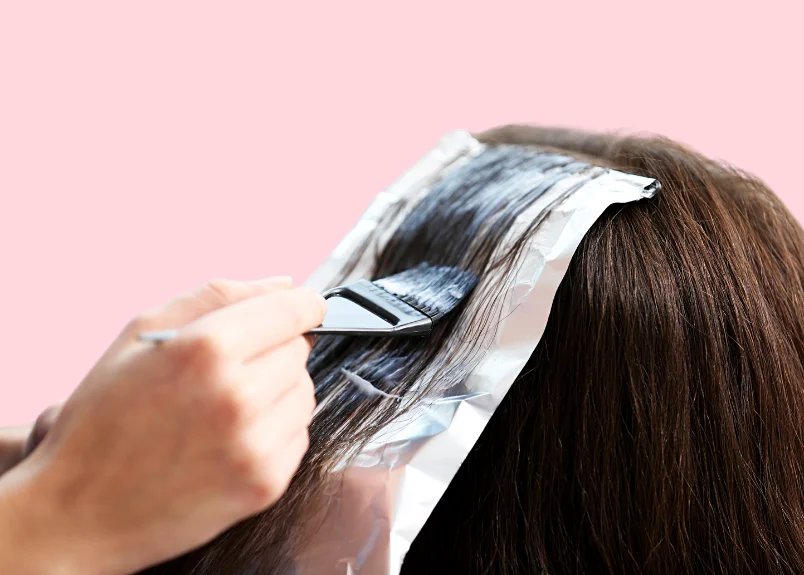
If you’ve previously lightened your hair and aiming for a dramatic color change to a darker shade, hair filling is must. This process involves replenishing the warm undertones, stripped away during hair lightening to ensure a rich, vibrant, and mud-free result.
- Porosity balance: Pre-lightened hair often exhibits uneven porosity, leading to inconsistent color absorption. Hair filling addresses this disparity and restores the hair’s natural structure, promoting more uniform color intake. This helps achieve a seamless transition between roots and ends.
- Pigment restoration: Bleaching strips away natural pigments, leaving hair leaving it with a cool, ashy base. Without replenishing these warm undertones, darker shades can appear muddy, green, or lack depth. Hair filling replenishes the pigments; provide a solid foundation for the desired color.
- Color vibrancy: Color filling provides a solid foundation for darker colors to adhere to, resulting in a more vibrant and long-lasting hue.
- Prevent surfacing of undesirable tones: Color filling is also helpful when your pre-lightened hair has unwanted blue or purple tones. The filler can neutralize these tones, creating a more balanced base for the darker color. This ensures that the final result is free from unwanted brassiness or unwanted hues.
How to fill hair before coloring?
Hair filling is a crucial preparatory step for achieving vibrant and long-lasting darker tones. Here are four essential steps to consider:
- Determine natural starting level: Assess the regrowth area to determine the client’s natural starting level. This will provide valuable information about the underlying pigments and help in formulating the root shade.
- Identify missing pigments: Use a color wheel to identify the missing pigments needed to achieve the desired end shade. For example, a level 6 target shade may require the restoration of orange and gold pigments.
- Opt for demi-permanent color: Demi-permanent color is ideal for filling pre-lightened hair due to its gentle formula and ability to create a more even result.
- Apply precisely: Apply the filler evenly to clean, thin sections of hair. Work on both sides of each section to avoid missing any areas.
- Let it rest: Leave the filler in place for the recommended time, and rinse thoroughly with water without using shampoo.
Tips for achieving even coverage with hair filler
To prevent splotchy results, it’s vital to follow the following tips for even and vibrant coloring result:
- Start from the back of your head: Start the filler application from the back of your head and work your way to the front to ensure all strands are covered.
- Use a comb: Use a comb to distribute the filler can help achieve a uniform application.
- Porous area need more attention: Pay particular attention to areas that may be more porous or damaged, as these sections can absorb color more quickly and unevenly.
- Section your hair: Divide your hair into sections to ensure complete coverage.
- Identify missed spots: Inspect your hair for any patches or missed areas to achieve an even application.
- Don’t skip warm tones: Include red or copper filler, even for cool or ash tones to prevent a muddy result and create a vibrant hue.
- Take your time: Avoid rushing or skipping the filling process.
- Fill two shades lighter: Filling two levels lighter than the target shade is generally recommended to ensure effective pigment restoration.
When you should opt color filling?
While color filling is generally recommended for significant color changes, the extent of lightening will determine its necessity. If you’re going down one or two shades, color filling may not be required. However, for a drop of four or five shades or more, color filling is essential to achieve the desired depth and richness.
How to choose hair fillers for coloring?

Before diving headfirst into a new hair color, take a moment to consider these crucial factors for optimal results. Overlooking any of them could lead to unwanted consequences that might require additional treatments to fix.
- Hair porosity: This refers to your hair’s ability to absorb and retain moisture. High porosity allows color to penetrate quickly but also leads to faster fading. Low porosity hair resists color absorption, making it harder to achieve the desired shade. Understanding your hair’s porosity helps you choose the right filler and application techniques.
- Previous hair treatments: Chemical treatments like perms, relaxers, and past coloring can significantly impact your hair’s structure and ability to hold color. Disclose any past treatments to your colorist to ensure they can choose appropriate fllers and techniques for your specific situation.
- Desired color: The target color also plays a role in determining the appropriate filler. For example, a cooler tone may require a different filler than a warmer tone.
- Professional consultation: It’s always recommended to consult with a professional colorist to assess your hair’s specific needs and determine the best hair filling approach for your desired results.
FAQs: Hair filling before color
Will I see immediate results with color filling?
While you notice an immediate difference after the color filling process, multiple applications may be needed to achieve your final color goal. Color filling is a temporary step that allows for evaluation and adjustments before committing to the permanent color.
Is color filling safe?
Yes, color filling is generally safe. It uses demi-permanent color, which fades naturally over time and doesn’t chemically alter your hair.
Do I need to fill my hair before dying it?
For darker tones, especially after lightening, color filling is often necessary to restore depleted warm undertones. This prevents muddy or green results and ensures a vibrant, rich color.
What happens if I don’t fill my hair?
Without color filling, your darker color may appear dull and fade quickly. The warm undertones are essential for reflecting light and achieving a vibrant result.
Can I use permanent color for filling?
The choice of filler depends on your desired end result. If you’re aiming for a permanent color, permanent fillers are suitable. For a more temporary option, demi-permanent fillers can be used.
What are some recommended filler formulas?
While individual needs may vary, many colorists prefer demi-permanent fillers for their gentle nature and ability to provide a solid foundation for darker colors. Consider consulting with a professional colorist for personalized recommendations.
Final Word: How to fill hair before coloring?
Filling your hair before coloring is a crucial step to ensure even color application and prevent unwanted brassiness. By using a filler that matches your desired shade, you can achieve a more vibrant and long-lasting color result. Remember to consult with a professional colorist for personalized advice and to achieve the best possible outcome.nce.


